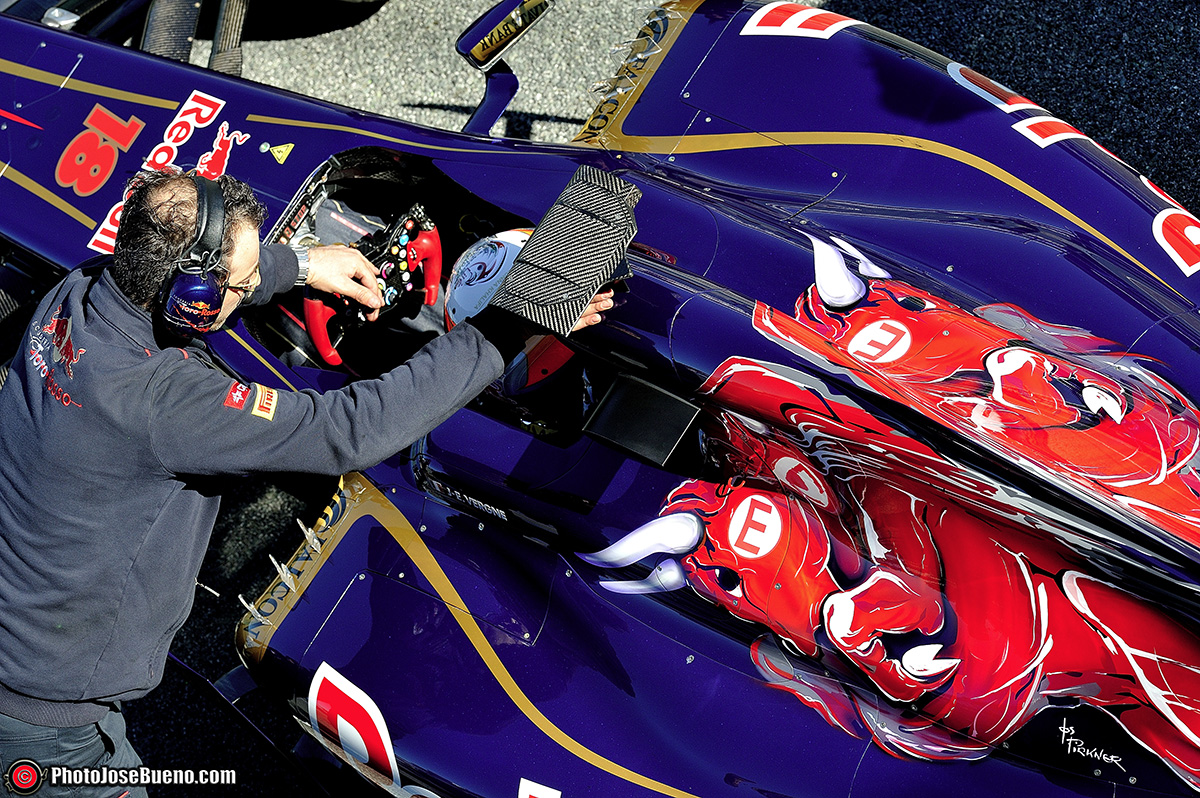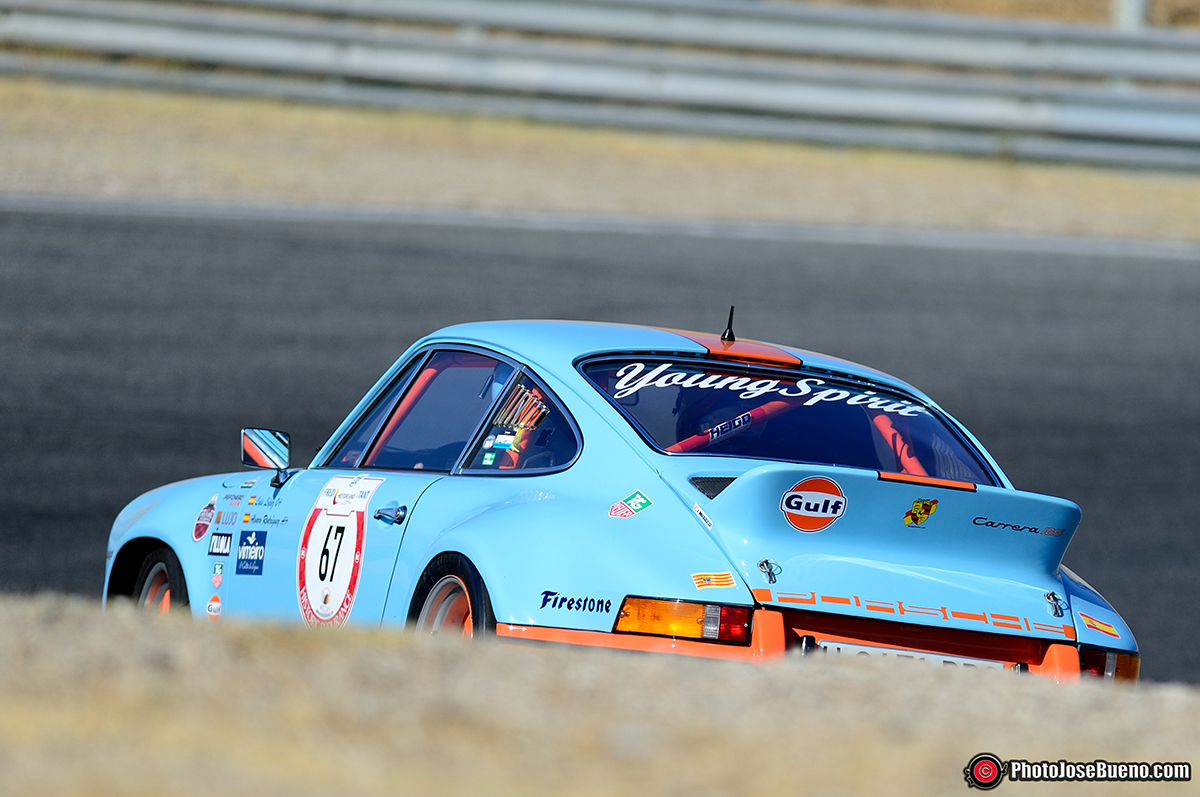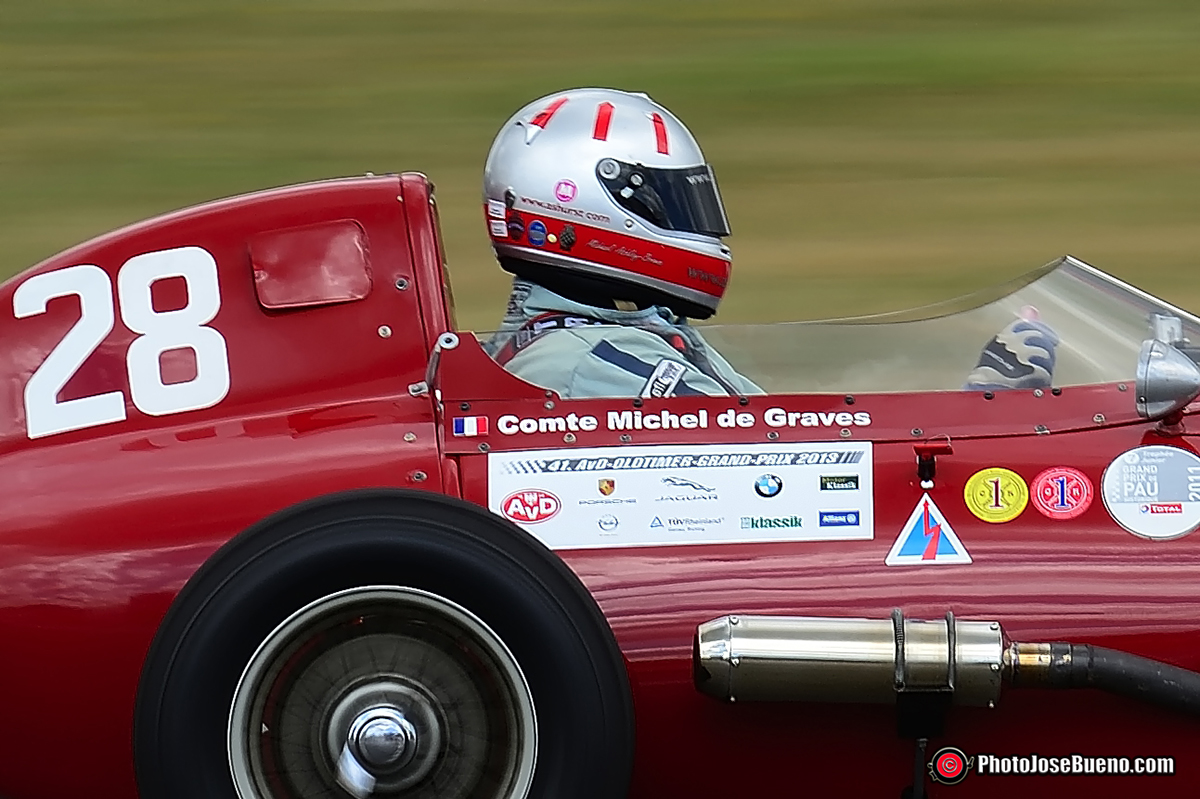
Old Timer Grand Prix Nikon D4 – Nikkor 70-200mm. 2.8 – f/11 – 1/125s – ISO 200
En la anterior entrada fuimos a los circuitos de velocidad con objetivos angulares y vimos su utilidad en zonas como el padock pero estás en lo cierto que con teleobjetivos podremos conseguir esas fotos tan espectaculares y llamativas que a todos los amantes del mundo del motor les gusta pero estas advertido ese trabajo es como ir a un gimnasio y estar toda una mañana haciendo ejercicio con las pesas, bueno al menos ese día nos ahorramos el gim.
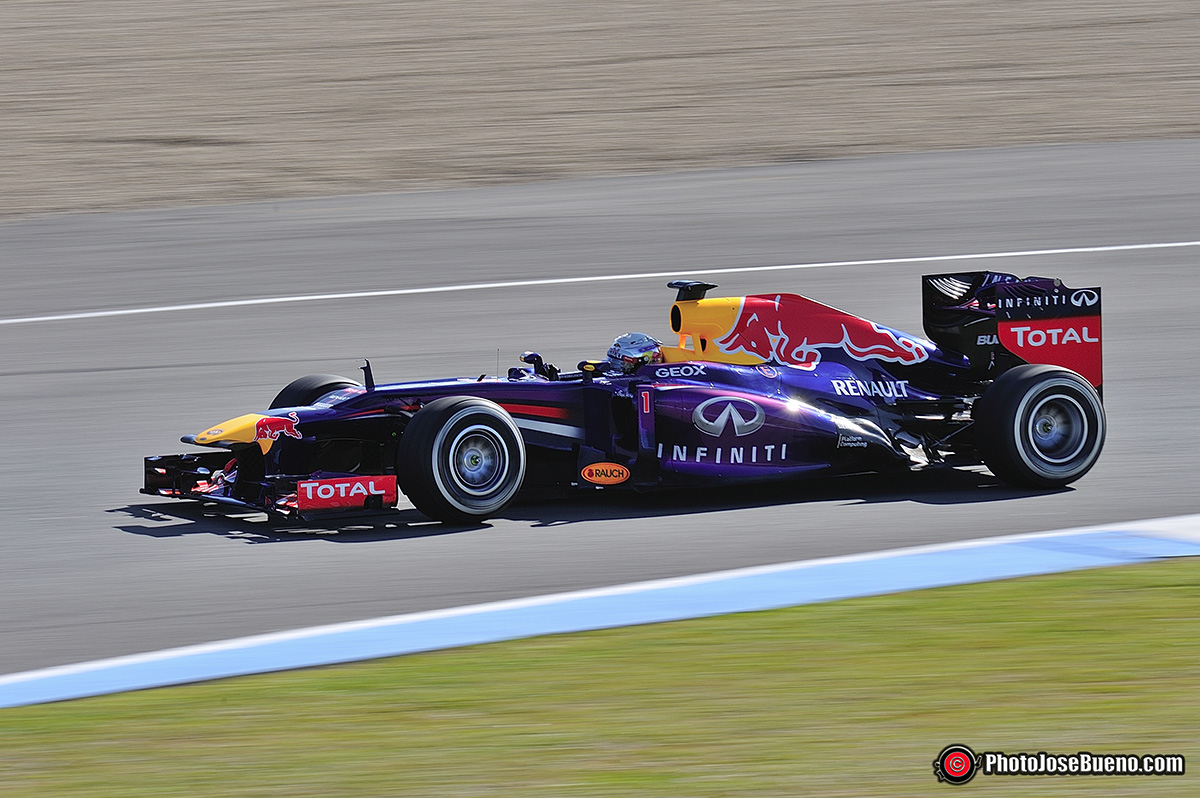
F1 Circuito de Jerez
Nikon D700 – Nikkor VR 300mm. 2.8 – f/20 – 1/100s – ISO 200
Otro problema añadido de los teleobjetivos es su volumen y peso a la hora de viajar pero recuerda la entrada «Volando al límite» en la que vimos como “eludir” los controles de los dichosos vuelos lowcost, si no pudiste verlo, aquí lo tienes.
Ya estamos en el circuito con nuestros teleobjetivos, bien sean fijos o con zoom, dispuestos a fotografiar esos momentos intensos en los que coches, motos o camiones van a límite desafiando las leyes de la física.
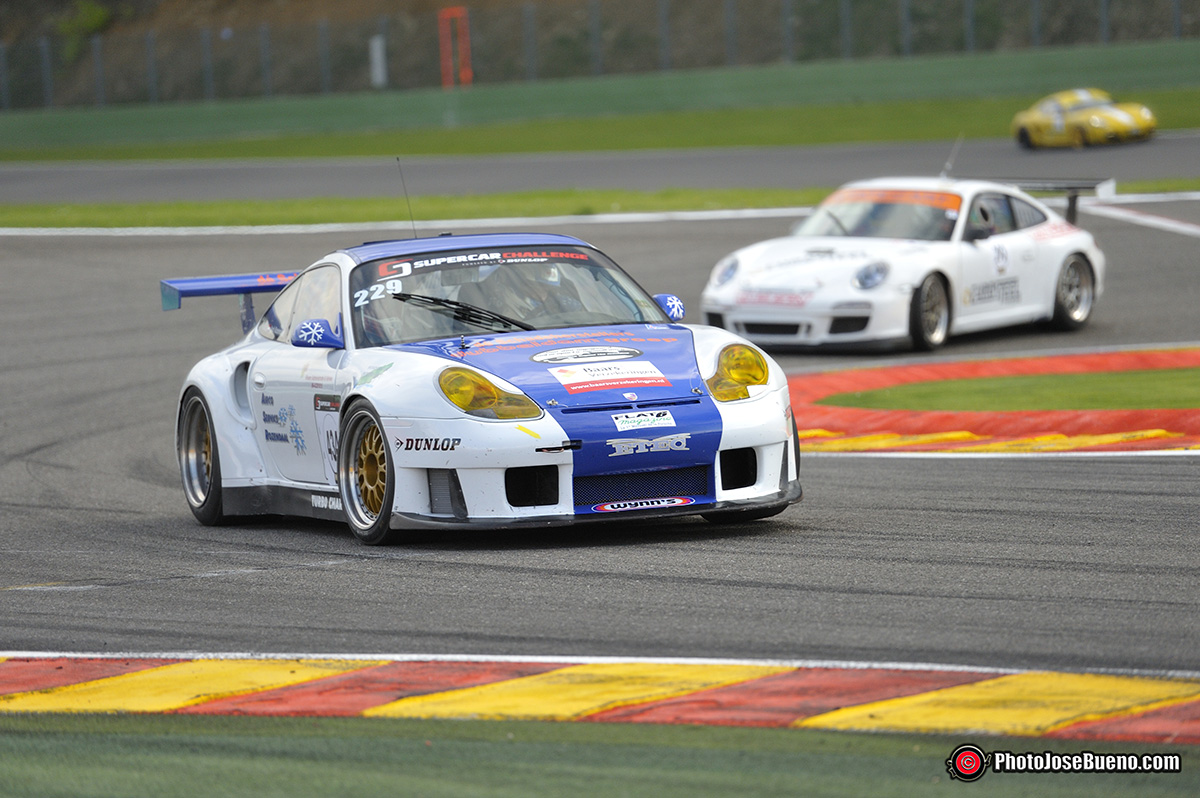
Circuito de Spa Francorchamps
Nikon D700 – Nikkor 70-200mm. 2.8 – f/3.2 – 1/1600s – ISO 1250
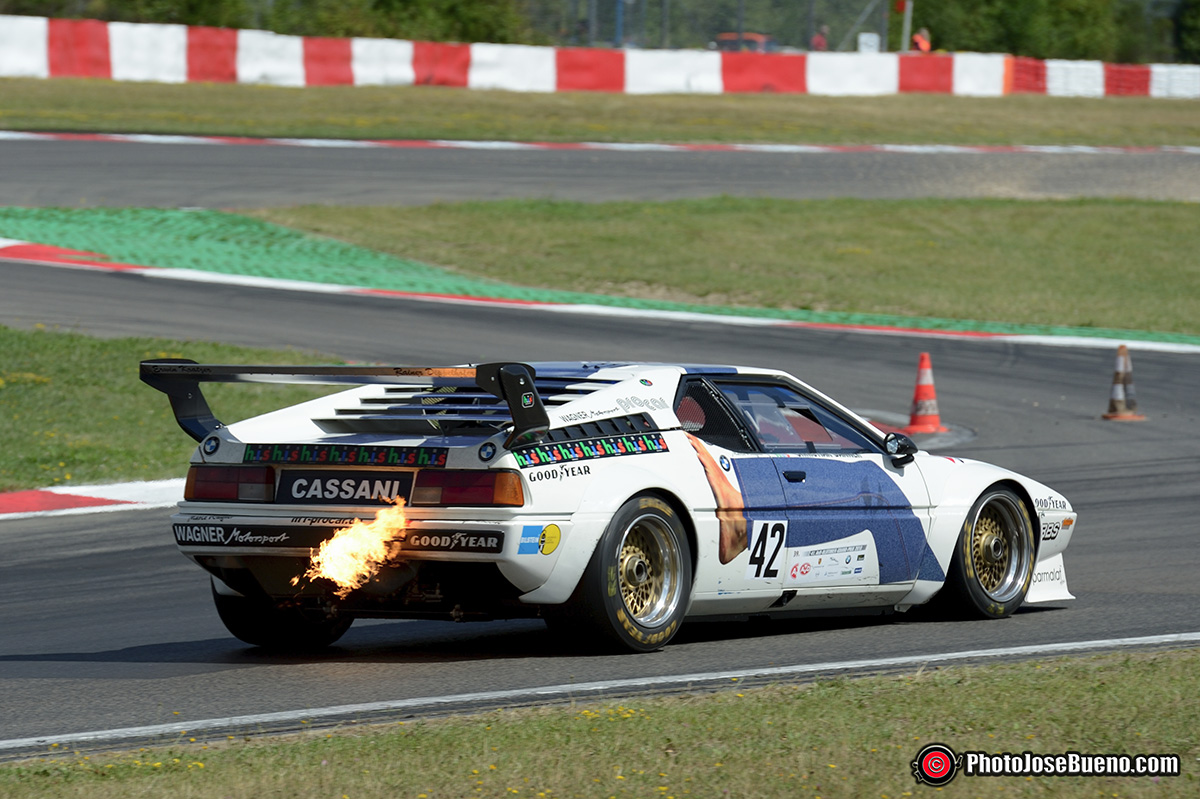
Old Timer Grand Prix – Circuto de Nürburgring
Nikon D4 – Nikkor 70-200mm 2.8 – f/5.6 – 1/1000s – ISO 200
Ya vimos en la entrada anterior que el Nikkor24-70mm era el objetivo soldado para utilizar en la zona de padock como gran angular pero como teleobjetivo el que más suelo utilizar es el Nikkor 70-200 VRII, uno de los mejores objetivos que hay en el mercado por su calidad y velocidad de enfoque. Es un objetivo que tiene la posibilidad de conectarlo a un monopié pero normalmente suelo utilizarlo a pulso sin apoyos y es que me resulta más cómodo para realizar el encuadre que necesito incluso en barridos con el sistema de disparo múltiple. Dependiendo del modo en el que esté trabajando, me refiero a apertura o velocidad y por tanto con velocidades altas o bajas en barridos, utilizo el sistema VR en lugar del monopié. Por cierto cuando utilices monopié el sistema VR hay que desactivarlo.
Al igual que en angulares el Nikkor 14-24mm. lo utilizo menos pero siempre consigo esa foto que marca la diferencia, en el caso de los teles el rey es el Nikkor 300mm, también f:2.8. Este es un objetivo que abulta y pesa lo suyo para hacer fotos “a pulso” y en esta ocasión si suelo utilizar el monopié al menos después de la primera media hora de su uso. Por cierto también tiene VR y el enfoque es increíblemente rápido con la Nikon D4.
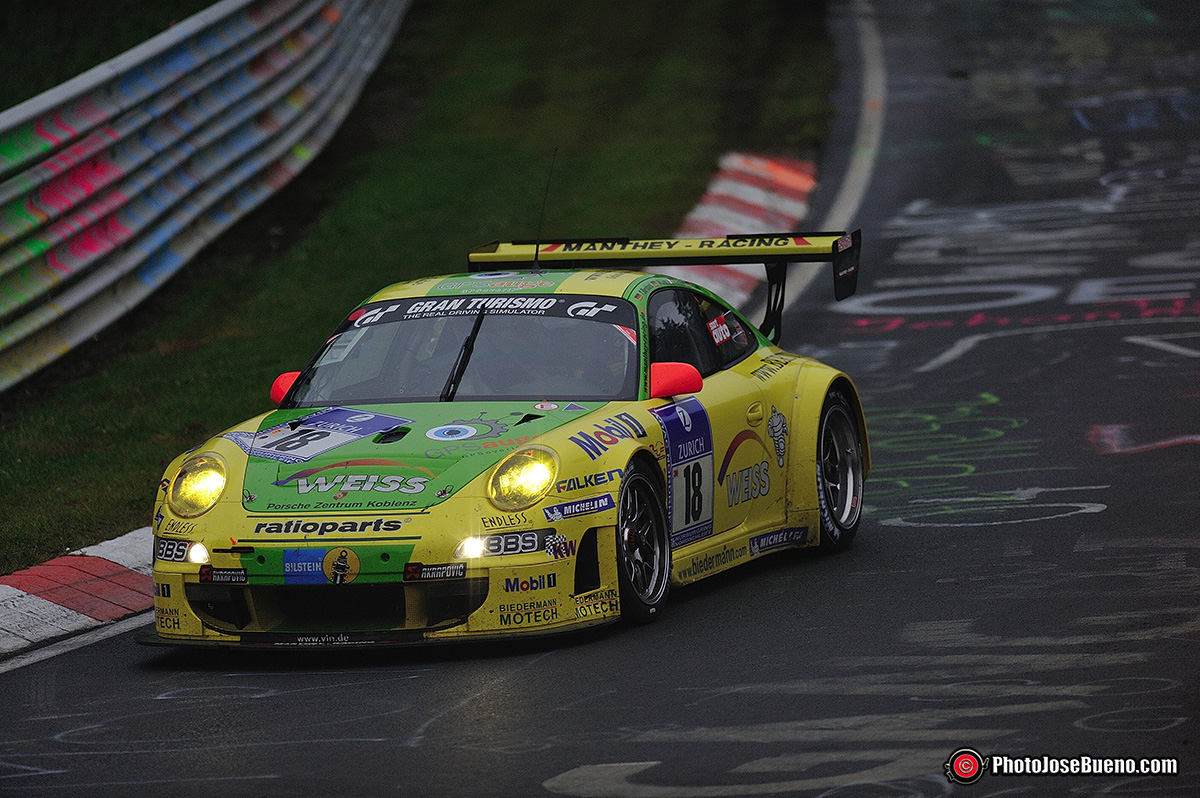
Equipo Manthey Motors ganador 24h. Nürburgring
Nikon D700 – Nikkor VR300mm. 2.8 – f/2.8 – 1/5000s – ISO 800
Cuando compre el 300mm. un amigo me preguntaba si lo había probado a f:2,8 y la verdad es que al ser un objetivo de una focal tan larga procuraba utilizar diafragmas más cerrados. Ante su insistencia puse el objetivo en la Nikon D700 y en modo apertura puse f:2.8, disparé una foto a una moto que pasaba y cuando ví la imagen en mi ordenador entendí el motivo de su precio y es que los casi 6.000 euros que cuesta lo valen.
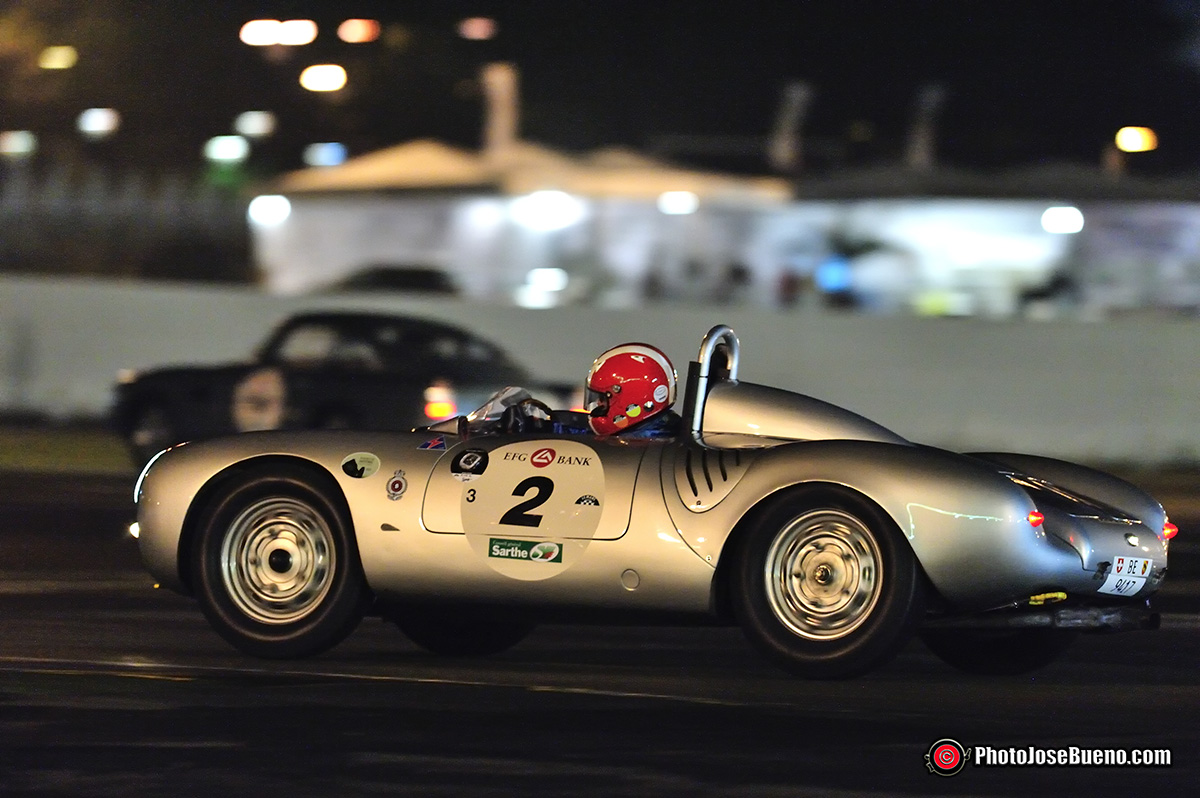
Le Mans Classic
Nikon D700 – Nikkor VR 300mm. 2.8 – f/3.5 – 1/200s – ISO 6400
Este objetivo además de conseguir fotos increíbles, te permite trabajar en zonas de circuitos donde no está permitido el acceso a los profesionales y si te quedas corto puedes utilizar un duplicador, en mi caso utilizo el Nikkor 1,7 y con ello conviertes el 300mm. en nada menos que un 500mm eso sí a costa de perder un poco de luminosidad pero también es cierto que el Nikkor 500mm. es f:4 y su peso y precio son ya estratosféricos. Hablando de peso, el 300mm. pesa casi el doble que el 70-200mm. (2900g. y 1450g. respectivamente).
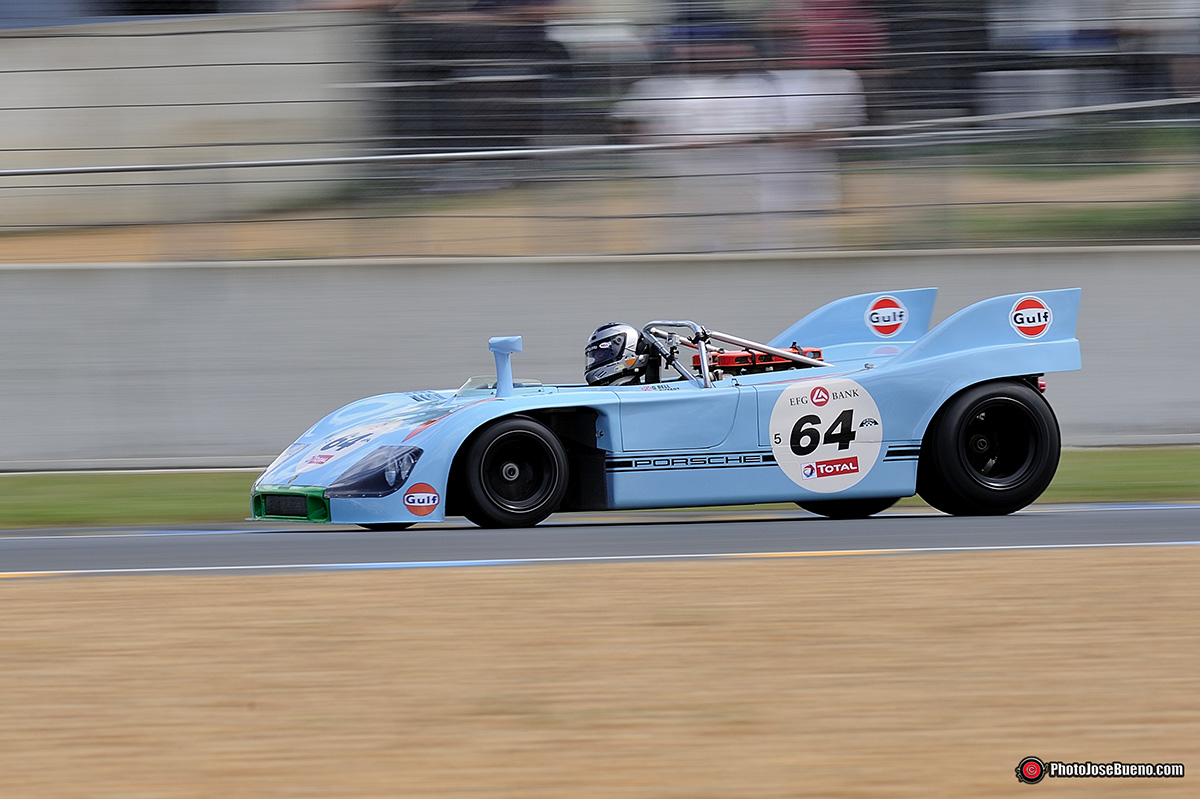
Le Mans Classic
Nikon D700 – Nikkor VR 300mm. 2.8 – f/16 – 1/125s – ISO 200
Cuando utilizo el Nikkor 300mm. con el monopié, suelo agarrar y disparar la cámara con la mano derecha y la mano izquierda la coloco en la parte delantera del objetivo, en concreto en el parasol para contra restar el peso y como ayuda para mover en seguimiento todo el conjunto. Por cierto, dicho sea de paso que el parasol es de carbono, todo un detalle de calidad en los materiales utilizados por Nikon en las ópticas profesionales. Otro detalle es la goma que tiene ese parasol, pensada para que puedas dejar el objetivo apoyado en el suelo incluso con el cuerpo puesto, esos detalles se agradecen. El único pero además del precio de este objetivo es que el filtro polarizador es especial al igual que su precio y eso duele. Aún así es uno de mis objetivos favoritos aunque me complique algo la vida a la hora de viajar en avión. Con el 400mm. directamente lo tienes que facturar y eso no es buena idea, como ya he dicho en otras ocasiones el material viaja conmigo si o si.
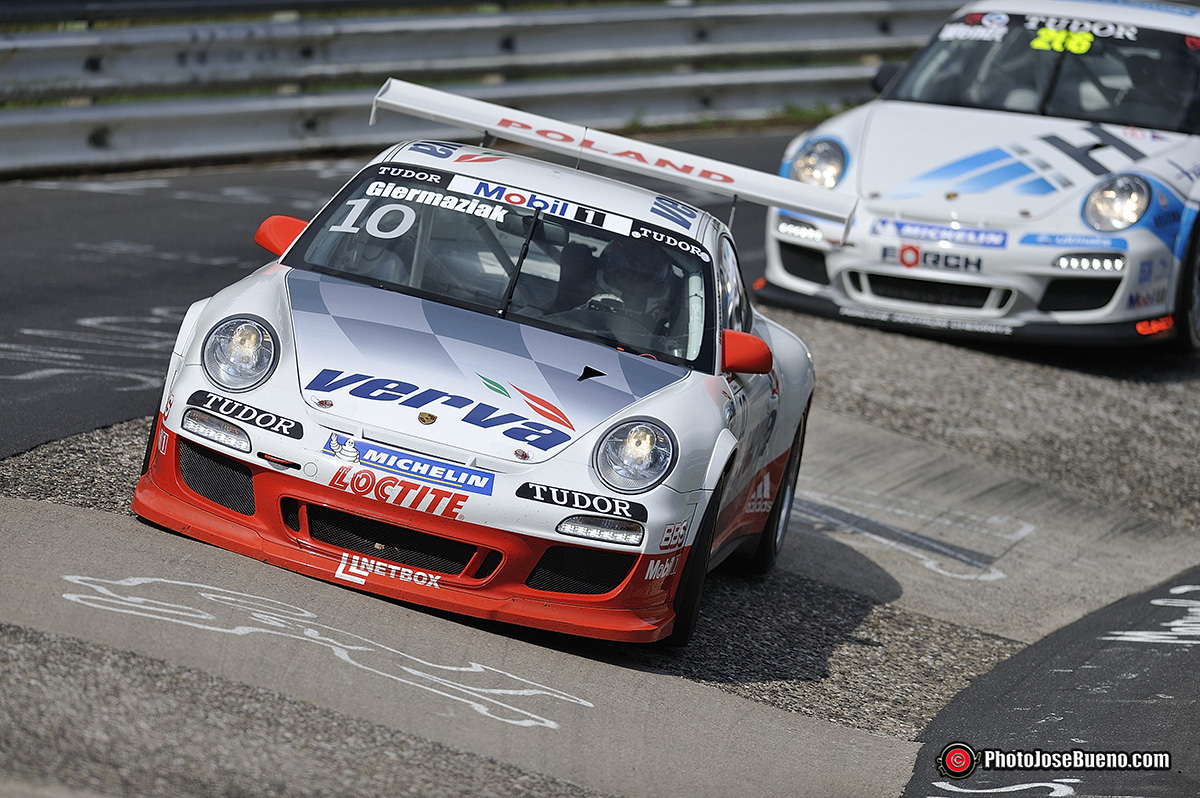
Circuito de Nürburgring Carrera CUP
Nikon D700 – Nikkor VR300mm. 2.8 – f/2.8 – 1/8000s – ISO 200
Después de una jornada larga de trabajo sin necesidad que del tipo 24 horas, cargando y utilizando estos objetivos, te aseguro que te sentirás como si hubieses estado en una sesión intensa de gimnasio. Nunca olvidaré lo duro que fue ir hasta la curva del Karrousel en la prueba de las 24h. de Nürburgring, cargado con dos cuerpos y casi todos los objetivos (unos 15 kilos) y es que el media shuttle (bus para prensa) nos dejaba en la curva Brünnchen, nada menos que a unos 4 kilómetros llenos de subidas y bajadas hasta llegar al Karrousel. Mereció la pena pero la vuelta con un granizo inesperado fue muy dura y me paso factura por la noche.
Circuit and fitness
In the previous post we went to speed circuits with wide-angle lenses and saw its usefulness as the paddock areas but you’re right that we can get those pictures telephoto so spectacular and striking that all motor racing enthusiasts like but these warned that job is like going to a gym and be whole morning working out with weights , well at least that day saved the gim .
Another problem is the telephoto volume and weight when traveling but remember the entrance where we saw as «circumvent» the happy flight controls lowcost , if you could not see it, you got it.
We’re in the loop with our telephoto lenses , whether fixed or zoom willing to photograph those intense moments where cars, bikes or trucks will limit defying the laws of physics.
We saw in the previous post that the Nikkor24 -70mm soldier was the target for use in the paddock area as wide angle and telephoto but the most I use is the Nikkor 70-200 VR II , one of the best goals to the market for its quality and focus speed . It is a goal that has the ability to connect to a monopod but usually usually use freehand without support and I find it easier to make the frame I need even sweeps with multiple trigger system . Depending on how you are working , I mean opening or speed and therefore with high or low speed sweeps, use the VR system instead of the monopod . By the way when using monopod VR system must be off.
As in angle Nikkor 14 -24mm . I use less but I always get that picture that makes the difference , in the case of Tele King is the Nikkor 300mm f also : 2.8. This is a goal that bulky and weighs quite a bit to take pictures » freehand » and this time if I use the monopod at least after the first half hour of use. By the way also has VR and focus is incredibly fast with the Nikon D4 .
When you buy the 300mm . a friend asked me if I had tried to f : 2.8 and the truth is that being a focal goal as long tried to use smaller apertures . At his insistence I put the lens on the Nikon D700 and opening mode put f : 2.8 , I shot a picture of a motorcycle passing by and when I saw the image on my computer I understood the reason for the price is that it costs about 6,000 euros worth it.
This goal besides getting amazing photos , you can work in areas of circuits where it is not allowed access to the professionals and if you fall short you can use a duplicator , in my case I use the Nikkor 1.7 and thus become the 300mm . in no less than 500mm albeit at the cost of losing a little light but it is also true that the Nikkor 500mm . is f : 4 and its weight and price are already stratospheric . Speaking of weight , the 300mm . weighs almost double the 70 -200mm . ( 2900g. and 1450g . Respectively).
When I use the Nikkor 300mm . with the monopod , land grab and shoot camera with the right hand and the left hand placed in front of the lens , specifically against the hood to subtract the weight and move in to help track the whole. By the way , the way that the hood is carbon , a nice touch of quality in the materials used by Nikon professional lenses . Another detail is the glue that has that hood , designed so you can leave the target resting on the ground even with the body position, these details are appreciated . The only but also the price of this lens is that the polarizing filter is special as its price and it hurts. Still one of my favorite targets although I complicate life something when flying. With the 400mm . directly you have to check and that’s not a good idea , as I said before the material travels with me if or if.
After a long day of work without the need to type 24 hours , charging and using these goals , I guarantee you ‘ll feel like you’ve been in an intense session in the gym. I’ll never forget how hard it was to go up to the curve in the test Karrousel 24h. Nürburgring , carrying two bodies and almost all targets ( about 15 kilos ) and that the average shuttle bus ( to press) left us in Brunnchen curve , no less than about 4 kilometers full of ups and downs until the Karrousel . It was worth it but the return with unexpected hail was very hard and I spend the evening bill .
